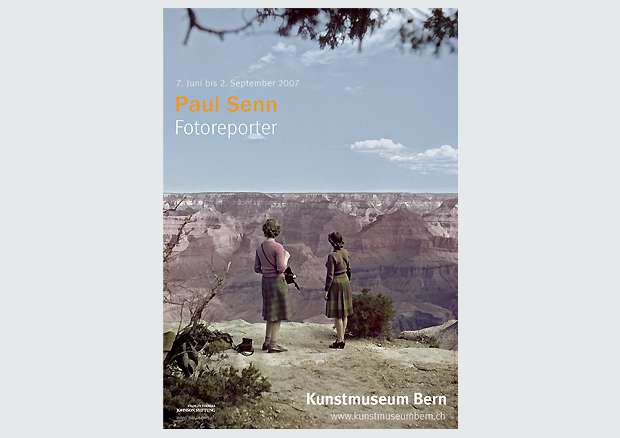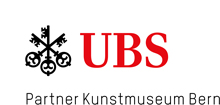Paul Senn, photo journalist
A fresh look at Senn's oeuvre
The Kunstmuseum Bern has completed the preservation work on Paul Senn's copious archive launched in 2004. Senn's colour photographs – and their stunningly modern aesthetics – are a sensational discovery.Moreover, so far Paul Senn has been perceived as a photo journalist whose documents focused on conditions in Switzerland. The exhibition that opens at Kunstmuseum Bern today will revise this perception. It will demonstrate that Senn's social commitment prompted him to travel widely in Europeand Northern and Central America.
Paul Senn, Gotthard Schuh and Hans Staub are the three great S-s in a generation of Swiss photo journalists active from 1930 to 1950. Senn achieved national recognition when he worked for Zürcher Illustrierte under its editor Arnold Kübler, and later for Du. He is considered to have introduced a concern with normal people and their everyday lives. All in all, he worked for more than forty illustrated magazines, both in Switzerland and abroad.
So far, Senn has largely been perceived as a photographer of conditions in Switzerland. His legendary Senn images show village gatherings, country folk at work and celebrating, workers' rallies, as well as disenfranchised and marginalised people. Their immediacy and straightforward composition has turned them into icons of Swiss life.
In 1982 the Kunstmuseum Bern accepted Paul Senn's archive as part of the Gottfried Keller-Foundation. In the context of its Paul Senn project launched in early 2004, the Kunstmuseum Bern has meanwhile carried out preservation and archival work on Senn's estate. A novelty in the history of Swiss photography is the creation of an on-line archive. Senn's photo reportages from twelve illustrated magazines can now be viewed at www.paulsenn.ch.
Both aesthetically and with regard to their content, surprising results have come to light in the course of this preservation and archiving project, and a review of Senn's series of photo-reportages – over 1,500 of them. For example, Senn's reportages from Switzerland were not content simply to depict an idyllic view of farmers and workers. Even then they were concerned with issues that are only now becoming the subject of public debate. Some of the lesser known aspects of his work are his commitment for Switzerland's Spiritual Defense against Nazism (Geistige Landesverteidigung), his struggle on behalf of institutionalised and foster children as well as homeworkers, and to report child abuse. It was a militant Senn who pilloried these abuses in his series of social reportages. During and after World War II, Senn also brought home disturbing and shocking images taken in Switzerland's neighbouring countries.
A further, sensational discovery in Senn's work are his colour photographs. After World War II and driven by his insatiable curiosity, Senn not only began to travel again, he also took an increasing number of colour slides in Italy, the U.S. and Canada. The aesthetic of these colour photographs is stunningly modern, their expressiveness vibrant and dynamic. Some images from these series resemble stills from key scences in Hitchcock's films. Senn's details in colour of reality are particularly astonishing, giving us a new perspective on everyday situations. Senn often seems to slip unobtrusively into the sitters' stories.
The Senn retrospective at the Kunstmuseum Bern presents more than 300 of his vintage prints, plus secondary copies, colour photographs and countless documents, in conjunction with Senn's reportages published in illustrated magazines.


